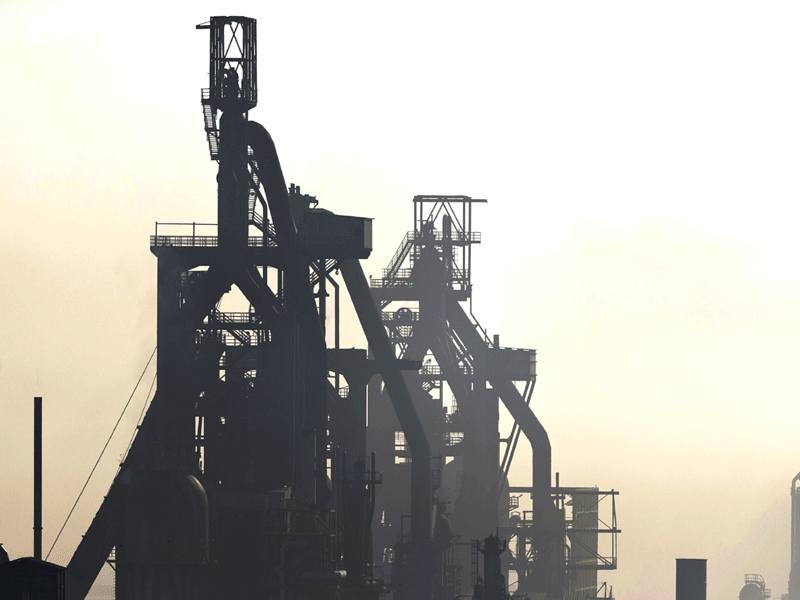Revival of ailing industries

- 193
- 0
The federal government has assured to activate the closed industry in one month, to continue the industrial support package and to pay the refund.
According to Patron-in-Chief of Pakistan Textile Exporters Association Khurram Mukhtar, who held separate meetings with the supervising federal ministers of commerce, energy and FBR officials, the government is determined to put the industry on its feet.
Pakistan's industrialization has been struggling for the last few decades due to economic decline, foreign investment and foreign exchange reserves, rupee depreciation against the dollar, petrol, electricity, gas prices, transport fares, etc. Inflation, expensive raw material imports and indiscriminate taxation are factors that have crippled the export-intensive industry and increased unemployment. There is a need to formulate a long-term industrial policy to advance the journey of economic development on a stable basis. In the recent past, instead of paying attention to this, the economy was "messed with" new issues. The results of industrial policy in the 1950s and 1960s were spectacular. By 1969, a World Bank study reported that Pakistan's manufactured exports were higher than Malaysia, Indonesia, Thailand, and the Philippines.
The share of the manufacturing sector in the GDP increased from 7.8% in 1949-50 to 26% in 1969-70. At the time of the establishment of Pakistan, few textiles were found in the country, then the boom of the industry began.
The former Lyallpur (Faisalabad) had become the Manchester of Pakistan. Now the situation is in such a way that 50% of the textile mills in the country are closed. In a country that wants to develop in the economic field, it cannot happen that the industry does not get gas in winter and there is loadshedding of electricity for many hours in summer.
Meanwhile, it is good to know that the Oil and Gas Development Company (OGDC) has announced a major breakthrough in its efforts to improve oil and gas production across the country, with production from a well located in Kohat district.
There has been a record increase. It is a joint venture with OGDC as operator 97.5% and Khyber Pakhtunkhwa Oil and Gas Company (KPOGDC) 2.5%. Since its discovery on January 13, 2022, the above-mentioned well has produced better gas flow.
Khyber Pakhtunkhwa districts of DI Khan, Bannu, Kohat, Lakki Marwat and North Waziristan have produced substantial amounts of oil and gas during the last two decades or so.
Deposits have been discovered. Punjab, Sindh and Balochistan have also had many such successes so far, but all of them are not of the kind that geologists have been making claims about.
Now we have progressed towards the gas crisis, it is facing extreme severity at this time and if we look at the supply and demand, almost all depends on imported oil and gas. Domestic consumers are getting gas with very low pressure for barely 16 hours out of 24.
As soon as the season comes, the situation becomes very dire. The situation demands that we should get out of complacency and seriously revise the government policies keeping the facts in front of us and speed up the search for new reserves so that the country's reserves are fully operational. Dependence on imports can be eliminated. The national economy is trapped in the quagmire of uncertainty due to the burden of unsustainable debts, the ever increasing trade deficit, insufficient foreign exchange reserves and the continuous depreciation of the national currency. It is important to instill confidence that the economic future of Pakistan is bright and achieving this goal is possible without much difficulty through better planning and correct measures.
Here one may make a special mention of the Caretaker Federal Minister for Commerce and Industry Dr. Gohar Ejaz while addressing the press conference at the office of All Pakistan Textile Mills Association (APTAMA), has given a very welcome and promising talk in this regard. He said that 80 billion dollars are needed to run the country and we will complete the strategic program to increase the country's exports to 80 billion dollars in 90 days’ time frame through reforms.
Industry does not need subsidy, continuous supply of energy can improve the production process.
Dr. Gohar Ejaz himself is also an industrialist and he has been given the responsibility of this sector in the caretaker government, so his expression of this belief cannot be called baseless. In the press conference, he also clarified that my mandate is not political, today Pakistan is suffering, it is my mandate to remove this suffering.
He said that such industries which are not registered in GST will be registered through track and trace system.
Exporting goods worth 80 billion dollars is not a big deal. We can increase our exports through regional trade.
The need of the hour is that the Caretaker Minister of Industry and Commerce should complete his project at the fastest possible speed so that the lights of hope shine in the darkness of despair.
The industrial revival is need of the hour and for that the GOvt should come with both short term and long term policies. The textile industry needs special package as textiles are the backbone of our economy and it is the main foreign exchange winning industry which also provides most jobs to the people across the country. The crisis of cotton raw material has also affected the textile industry along with the issues of inflation, rupees depreciation and increasing cost of doing businesses and all issues need to be take care of. Without a comprehensive strategy, no success is possible.
Meanwhile, the government should also not victimize the masses through imposition of unjust taxes on the one pretext or the other as masses are deep in water and they are not in position to sustain further burden in the form of new taxes.
Published in The Daily National Courier, September, 02 2023
Like Business on Facebook, follow @DailyNCourier on Twitter to stay informed and join in the conversation.

















































